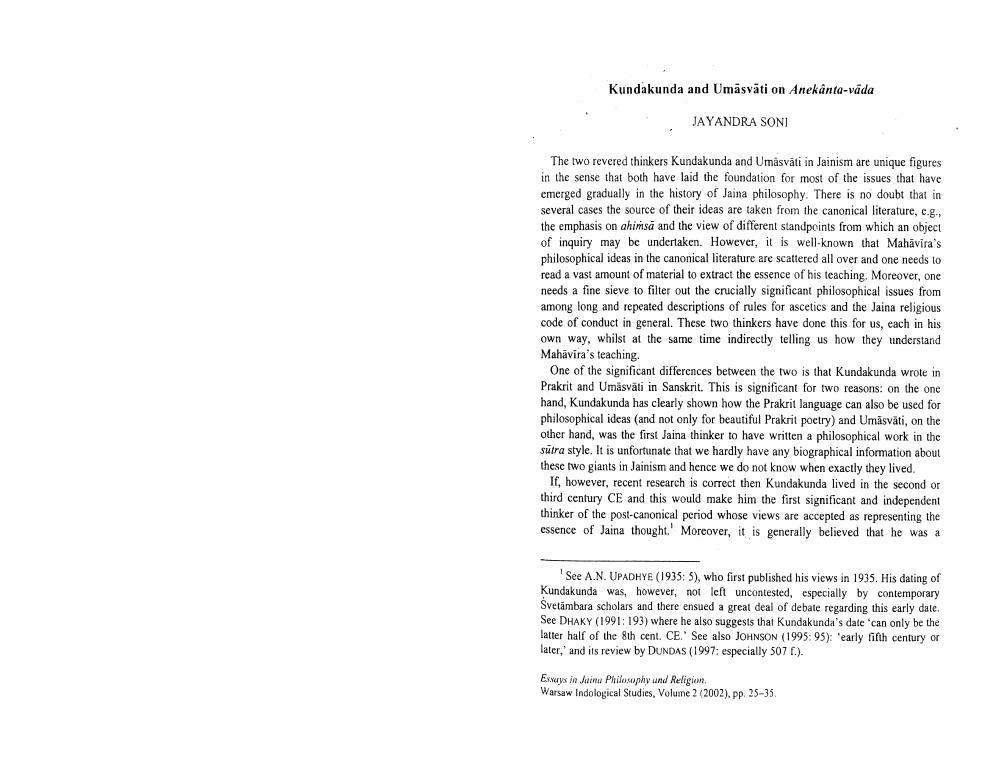Book Title: Kundakunda And Umasvati On Anekanta Vada Author(s): Jayendra Soni Publisher: Jayendra Soni View full book textPage 1
________________ Kundakunda and Umäsväti on Anekanta-vāda JAYANDRA SONI The two revered thinkers Kundakunda and Umásvāti in Jainism are unique figures in the sense that both have laid the foundation for most of the issues that have emerged gradually in the history of Jaina philosophy. There is no doubt that in several cases the source of their ideas are taken from the canonical literature, c.8. the emphasis on ahimsa and the view of different standpoints from which an object of inquiry may be undertaken. However, it is well known that Mahavira's philosophical ideas in the canonical literature are scattered all over and one needs to read a vast amount of material to extract the essence of his teaching. Moreover, one needs a fine sieve to filter out the crucially significant philosophical issues from among long and repeated descriptions of rules for ascetics and the Jaina religious code of conduct in general. These two thinkers have done this for us, cach in his own way, whilst at the same time indirectly telling us how they understand Mahavira's teaching One of the significant differences between the two is that Kundakunda wrote in Prakrit and Umäsväti in Sanskrit. This is significant for two reasons on the one hand, Kundakunda has clearly shown how the Prakrit language can also be used for philosophical ideas and not only for beautiful Prakrit poetry) and Umäsväti, on the other hand, was the first Jaina thinker to have written a philosophical work in the sutra style. It is unfortunate that we hardly have any biographical information about these two giants in Jainism and hence we do not know when exactly they lived. If, however, recent research is correct then Kundakunda lived in the second or third century CE and this would make him the first significant and independent thinker of the post-canonical period whose views are accepted as representing the essence of Jaina thought. Moreover, it is generally believed that he was a See A.N. UPADHYE (1935:5), who first published his views in 1935. His dating of Kundakunda was, however, not left uncontested, especially by contemporary Svetambara scholars and there ensued a great deal of debate regarding this early date. See DHAKY (1991: 193) where he also suggests that Kundakunda's date can only be the latter half of the 8th cent. CE. See also JOHNSON (1995: 95): 'early fifth century or later, and its review by DUNDAS (1997: especially 507 1.). Eynuy in Juin Philosophy and Religion Warsaw Indological Studies, Volume 2 (2002), pp. 25-35Page Navigation
1 2 3 4 5 6
